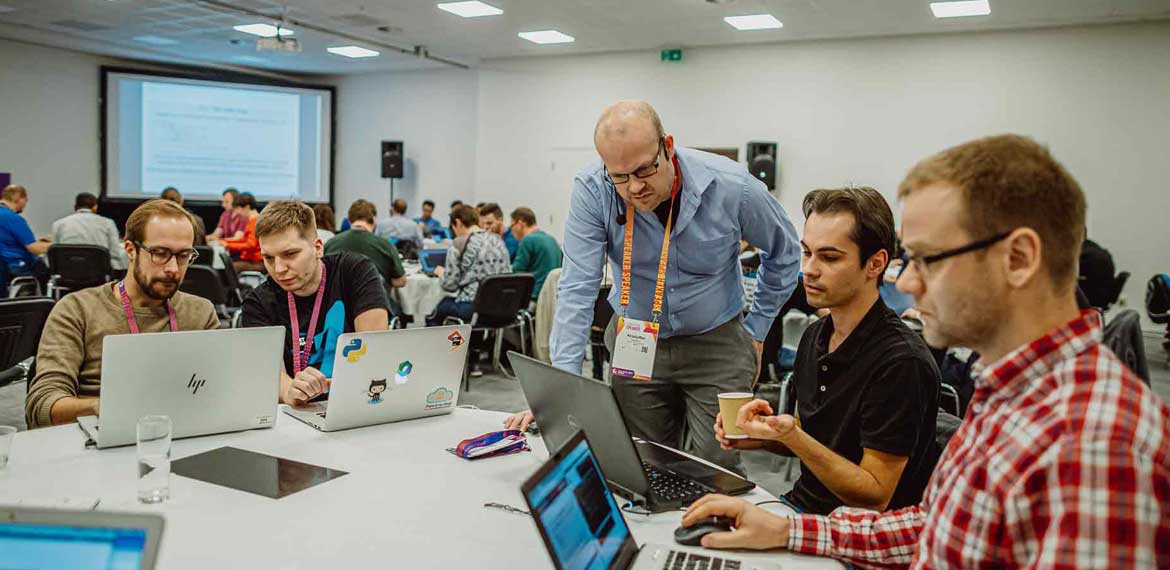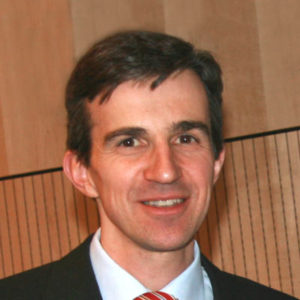
In this blog, the 2019 committee have recommended EuroSTAR sessions for an managers. Learn from the experts, discover how you can improve both your testing and management in an everchanging world.
Do you agree with the committees picks?
Monday

Tutorial F – Unboring Test Management by Iris Pinkster-O’Riordain and Greet Burkels
In recent years Test Management diminished to something you don’t want to do. The main instigator for this change is the rise of Agile and DevOps, due to which management thinks that Test Management is not required. It can also be the ‘old-school’ impression that Project Managers can do Test Management. In any case, it is the speakers belief that Test Management tasks are still required to successfully finish projects when successful means: it solved a problem. Let’s not forget: not all projects are Agile or Devops or ever will be, and not all project managers have the time or knowledge to do test management tasks.
In this tutorial we will look at traditional Test Management tasks and see how they relate to different contexts. The ”unboring” part? Topics will be explained that give Test Management the extra sparkle and make it less “boring”. They will show that you have a lot more influence than you might think!
Tuesday

Tutorial H – Riskstorming – Build A Strategy That Matters by Beren Van Daele
Testing is a craft, but it is also and for many foremost a job. A job you do day in day out, evolving with all the rituals every employee develops over time. These rituals, together with all sorts of other external factors (deadlines, pressure, etc.) often means that we don’t have a test strategy or that we are no longer reconsidering the strategies we set out from the start. Having the right strategy in testing is important to stay as efficient and effective as you can be.
The RiskStorming session format is a wonderful way of generating a visible Test Strategy as a team that automatically focuses your plan to answer the important questions. It leverages the diversity of people around the table, their ideas and experiences, to share and learn from each other, in order to come up with a strategy that answers the following question:
How do we test -> the risks that impact -> the aspects of our Product that matter?

Tuesday Track 4 – Test Architects at Siemens are Working Well by Peter Zimmerer
This presentation explains the new key role Test Architect, provides practical guidance on the needed strategies, tactics, and practices, and shares our experiences and lessons learned:
– Why do we need a Test Architect?
– What is a Test Architect really?
– What are the responsibilities and tasks of a Test Architect?
– How can a Test Architect provide value and create impact on the business?
We are continuing our journey in this direction. At Siemens our target is to have nearly 50 certified Test Architects by the end of 2019. That means a tremendous upgrade and empowerment of testing, and an excellent starting point for working well!

Tuesday Track 8 – How To Become As Agile As Your Project by Maud Lundh
What happens when your working method and processes are turned upside down? A few years into my career, I was the test manager for a new project labeled as “extremely agile”. What I learned early on was that the way to develop a project from start to finish had changed.
The project used a new process called “Conceptual Development”, a design-driven, lean development process. “Conceptual Development” focuses on customer collaboration and pushing through frequent deliveries from concept through design all the way to development. With a more traditional agile process, requirements would have first been planned and developed, before being tested near the end of a delivery. Now we tested concepts and prototypes first, and every prototype and design was its own delivery. This new process opened up new possibilities of testing since everything was testable from the get-go.
With “Conceptual Development” it is important to fail quickly and test with actual users before a single line of code is written. This new way of lean startup created new challenges for our team. Everyone needed to implement “Design Thinking” in their work. So how did we approach this new way of working as a team? Did we learn new skills and techniques, or just adapt those we had in a new environment? And what were the results?
Wednesday

Wednesday Track 3 – Measuring Release Quality & Delivering Value by Marina Bechaalani
Within a 2000+ employees company, it is very challenging to ensure that the needed quality is delivered to clients. Clients should have the same experience using the final product from release to release. My motivation for creating a metric started with a famous definition of quality by Jerry Weinberg, “Quality Is Value To Some Person” enriched later on by Michael Bolton with “at some time” and by James Bach with “who matters”:
“Quality Is Value To Some Person, At Some Time, Who Matters”
If we will not concretise and align upfront on the “values to persons who matter today”, we will miss looking at our releases quality in a common way and taking the needed joint decisions.
During the presentation the need for this new measurement will be discussed with the actions taken by all builders and consumers of the releases based on those measurements.

Wednesday Track 7 – The Future of Testing: More Awesome by Martin Karsberg
For the last year i have been part of a research project financed partly by the Swedish government to try to look and challenges with in the field of software testing. The project is a joint venture between my company, representing the industry and Research Institute of Sweden (RISE) Viktoria, representing Academia. The project was set up with focus on AI/ML with in the Automotive industry.
The project has been two fold. The first part has been a literature study to survey the current studies been published. Some 60+ papers was included in the study to get broad view. In the second part we did deep interviews with people in the industry to see how their everyday work map to the subjects that academia are conducting research on.
My talk will present the result of both part of the study. I will go though the top 3 challenges with in software testing from both perspectives. By doing this i hope to challenge the perception of where we are and what the future has in store for us, testers.

Wednesday Track 13 – Leadership: From Monolith to Pebbles by Adam Matlacz
When working with medical products, the verification process can be a real pain – especially when dealing with completely new QA team, complex hardware/software setup and collaboration of multiple scattered teams.
My first release as a System Test Manager was a real struggle – stress, overtime, exceeding deadlines and a lot of uncertainty. But I’ve learned my lesson and focused on preparing and building the team with the right skill set and competencies. And what is the most important, now each team has its own leader with his responsibilities and me acting as a glue to hold them all together. Motivation, focus on details of the tasks and team velocity have increased tremendously. Work is less stressful and management more happy with the results. Thanks to the changes, we are finally working well.
I want to tell the story of fall and rise of a team in complex project and environment. I will show my framework for building teams in complex projects and organizations. The talk will tackle the issue of building a Rock Star QA team by the right distribution of leadership

Wednesday Track 16 – Good Intentions Out The Window by Jantien Van Der Meer
Your team has been working in an agile setting for some time now, and you’ve been doing quite well: Delivering high quality software in a predictable pace, continuously improving your product as well as your way of working. The team is happy with the way of working and the stakeholders are happy with the product that is being delivered. All is well.
But then something happens… Suddenly there is a change within the organisation. A major change in targets, unrealistic deadlines are introduced, extra functionality is pushed… and you notice a change within your team as well: The people who have been working so well together, now don’t seem to have time for each other anymore, let alone for continuous improvement. In fact, some of the things the team has agreed upon to be able to deliver better software, such as three amigo and pair programming sessions, are discarded because “there’s no time for that now”.
The result: a significant increase in findings, more rework, pointing fingers, an hostile environment where people are no longer cooperative. All good intentions went out the window. Was all the progress your team made for nothing? How could this have happened?
Last year, I found myself in this situation, asking similar questions. It did not only frustrate me, it also intrigued me, so I set out to find out what could have caused such a setback within our team. I consulted a specialist in the area of human behaviour and mental performance.
Thursday

Thursday Track 3 – Can’t Grow Without People by Martha Firlej
Three years ago I decided to change company and look for new opportunities. I never imagined that I would work for a huge Ukrainian software house with over 25 years of experience on the market. The one thing that surprised me the most when I joined, was the set knowledge model that was applied to every developer, business analyst and software tester at the company. I started to dig deeper into why it is the first company I know to build such a tool. The reason was simple, the company had experienced an unsustainable growth and there was a need to build a company-wide process/solution for people growth and company stability.
I would like to share the Knowledge Models that were developed and show how it looked till end of 2018. It supported growth from 500+ software testers in 2014 to 1000+ at the end of 2018

Thursday Track 8 – Finding & Developing Good Software Testers by Phil Royston
Doing testing well requires having enough people with the right skills and knowledge. But the challenges facing software testers are growing and at the same it seems to be getting harder to get sufficient talent into IT as a whole, never mind into software testing.
I feel I have been trying to meet these challenges throughout my software testing career, but most especially so in the last five years whilst founding and managing a software testing business. I would like to share the experiences and lessons I have learned not only from delivering testing services but also from building a company.

Thursday Track 10 – Ferries & Crusises – Testing & Releases by Derk-Jan de Grood
Backlog ordering can be cumbersome. In this workshop we learn how to order our backlog based upon business value and define a roadmap that delivers a workable release. The workshop is based upon a cruises and ferries operator that want to boost its business. Based upon a given backlog teams will learn how to sort their backlog in order to define the business value. As a next step we will use a customer journey to assess the result of the initial sorting and learn that release thinking will lead to a different approach but will yield in more business value and faster feedback for the business. We will explore the role of testing as a measure to create feedback and assess whether the roadmap should be altered to optimize for testing. In the 3rd round the teams will enhance their roadmap in order to reduce the time to market of their initial MVP, to create a faster feedback loop for testing and to check whether the technical solution aligns with the company goals.
Join this session if you want to gain a better understanding in how to plan for business releases and MVP’s that yield value and want to participate as a tester in this process to ensure that testing is embedded in the approach.